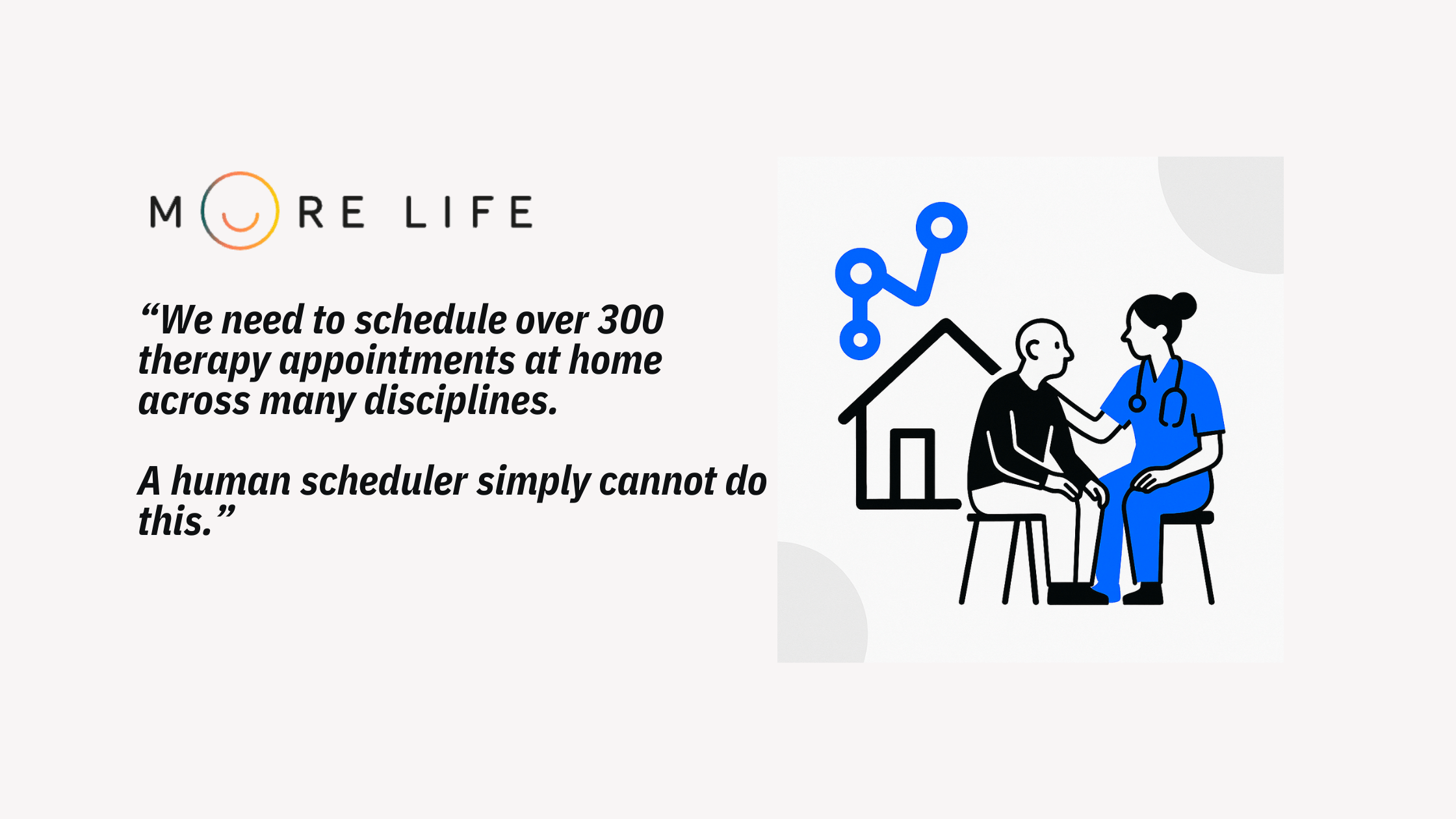
How the 'Job Complexity' constraint in Solvice’s API Delivers More Equitable and Efficient Schedules

In many service and logistics operations, not all jobs are created equal — yet most scheduling still treats them that way.
Two home care visits may both be scheduled for 45 minutes, but one may involve complex mobility support while the other is a simple wellness check. Two cleaning jobs may have the same booked duration, yet one includes deep cleaning after an event, while another is light routine maintenance. In field service, a basic sensor replacement is not the same as troubleshooting an industrial system failure.
When complexity isn’t factored into scheduling, the consequences are real:
According to McKinsey, unfair or overloaded job allocation contributes to a 20% decrease in workforce productivity in field-heavy operations, and burnout is responsible for up to 50% higher employee turnover in service-based industries (source: McKinsey).
This is where the Job Complexity feature in the Solvice Route Optimization API comes in.
Solvice provides advanced optimization algorithms through a developer-friendly API — it’s not an app, it’s the intelligence behind your scheduling engine. The Job Complexity feature allows you to assign a weight or difficulty score to each task, telling the optimization engine: this job is more demanding than others.
When route optimization ignores job complexity, serious operational problems emerge. Technicians assigned similar routes can face vastly different effort loads—one might handle quick maintenance checks while another tackles complex repairs, yet both appear equal on paper. This imbalance leads to frequent burnout among workers handling harder jobs, while skilled staff elsewhere remain underutilized. Meanwhile, underestimated job effort drives up overtime costs as simple time-based scheduling fails to capture the true workload.
Factoring job complexity into route optimization changes everything. Jobs get assigned to reflect actual workload intensity, not just location and time. Scheduling starts supporting sustainable performance by distributing demanding work fairly. Your fleet and workforce operate at full potential, with the right skills deployed where they're needed most. And predictable workloads reduce overtime expenses by accurately accounting for the real effort each job requires.
Care visits often differ drastically in complexity. Some patients require extensive assistance with mobility or specialized care.
Example: A home care provider assigns a complexity score of 2.0 to intensive medical visits and 1.0 to standard wellness checks. Solvice ensures high-intensity patients are fairly distributed among caregivers.
Impact: More balanced care routes, reduced caregiver burnout, better patient experiences.
Jobs like repairing a minor sensor differ significantly from diagnosing industrial system failures.
Example: A utility company uses complexity weighting to ensure technicians with multiple high-complexity tasks aren’t overloaded.
Impact: Higher first-time fix rates and improved technician satisfaction.
Deep post-event cleaning takes more physical and emotional effort than regular daily cleaning.
Example: A cleaning firm marks deep-clean jobs with a higher complexity factor. Solvice spreads heavy tasks evenly across the team.
Impact: Reduced fatigue and better quality of service.
Transporting a wheelchair user or someone needing medical supervision requires more effort than a standard passenger pickup.
Example: A Non-Emergency Medical Transport provider applies higher complexity to assisted passenger trips.
Impact: Better alignment of assistance-based demands with available resources, reduced wait times (studies indicate NEMT wait times can be reduced by up to 20% when factoring in assistance requirements).
When workloads are assigned based only on time or distance, complexity-heavy jobs can unintentionally overload certain team members or vehicles. Factoring in Job Complexity enables more equitable distribution of effort — and that directly improves key operational metrics:
As industries move toward AI-driven workforce and fleet management, fairness is becoming a strategic differentiator. Companies that optimize not just for speed or cost — but for sustainable performance — are gaining a long-term edge.
Solvice enables this through API-first optimization, giving you the flexibility to combine complexity with:
The result is a more resilient operation and better routes, of course.
If your scheduling or routing still treats every job as equal, you’re leaving efficiency, performance, and employee satisfaction on the table. Job Complexity helps you optimize with reality in mind — and Solvice makes it easier than ever to integrate this intelligence into your platform.
💬 Let’s explore how Job Complexity can transform your workforce and route planning. Contact Solvice today to get started.



